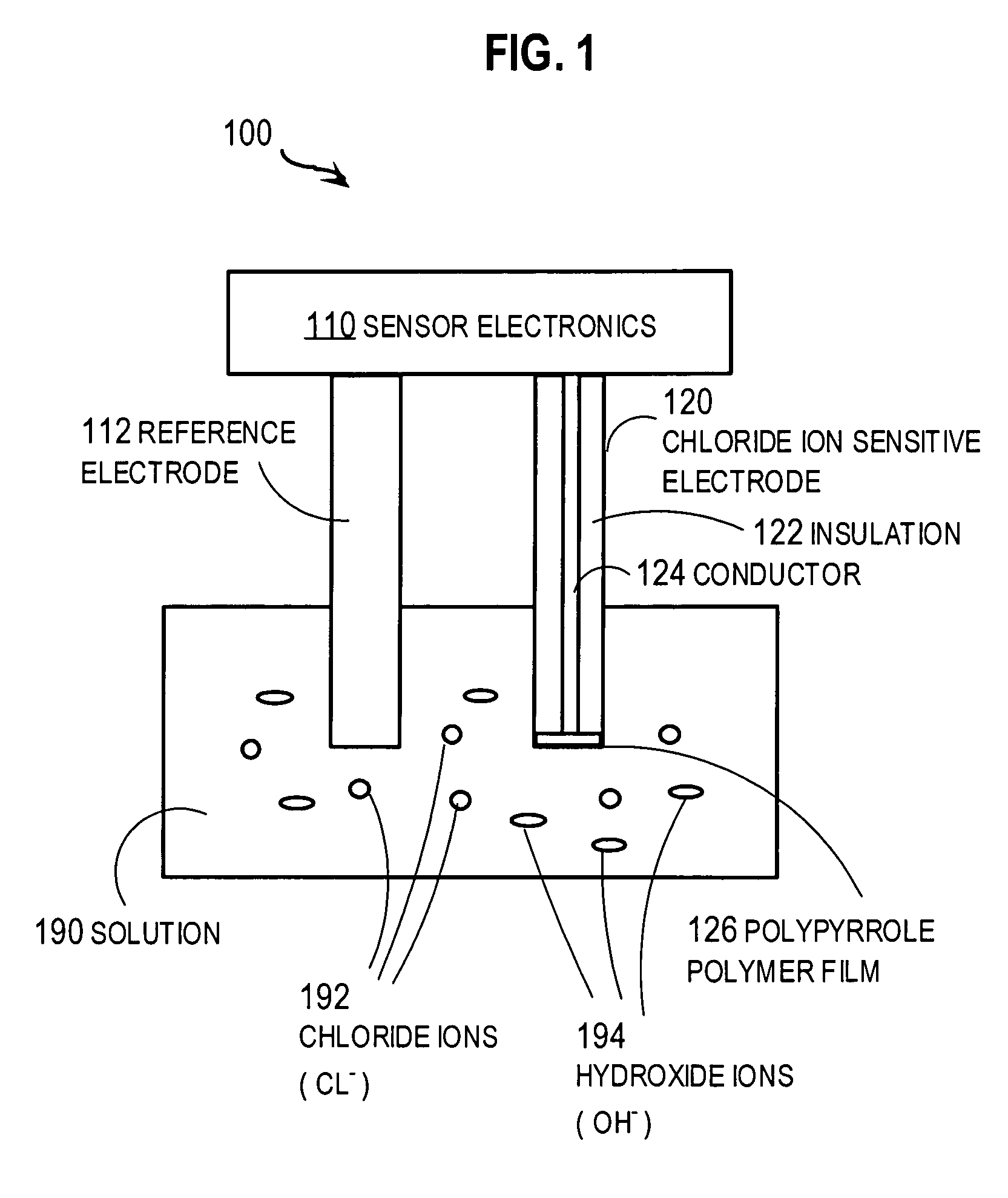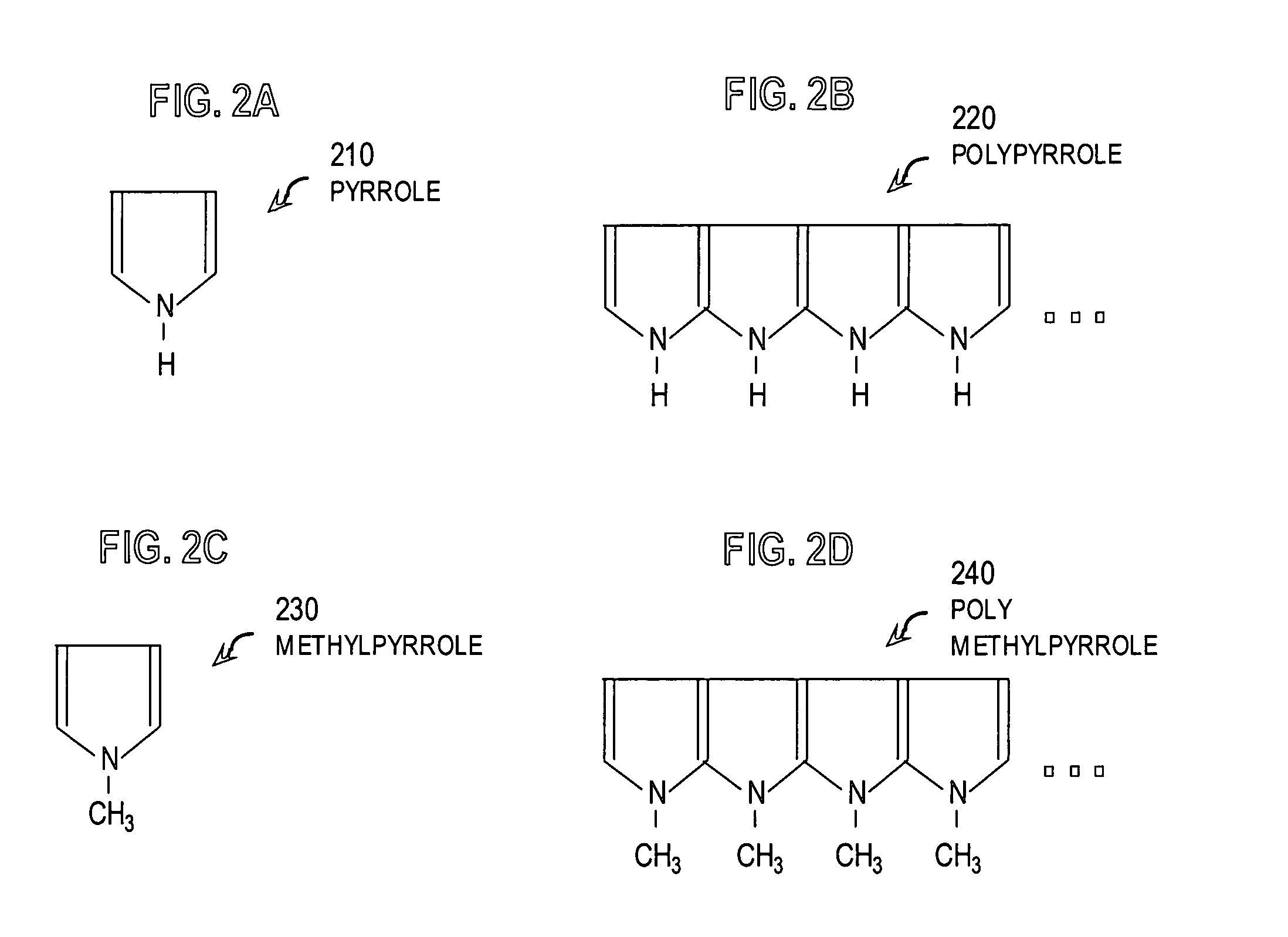Techniques for sensing chloride ions in wet or dry media
a chloride ion and sensing technology, applied in the field of sensors, can solve the problems of low adherence of pyrrole, low adherence rate, and low cost of these measurements, and achieve the effect of improving adherence ra
- Summary
- Abstract
- Description
- Claims
- Application Information
AI Technical Summary
Benefits of technology
Problems solved by technology
Method used
Image
Examples
Embodiment Construction
[0039]Techniques are described for measuring chloride ions in a medium. In the following description, for the purposes of explanation, numerous specific details are set forth in order to provide a thorough understanding of the present invention. It will be apparent, however, to one skilled in the art that the present invention may be practiced without these specific details. In other instances, well-known structures and devices are shown in block diagram form in order to avoid unnecessarily obscuring the present invention.
[0040]Particular embodiments of the invention are described in the context of measuring chloride ions in reinforced concrete decks of structures such as bridges and piers. However, the invention is not limited to this context, and embodiments may be deployed to measure chloride ion concentrations in solutions, in gases such as air, and at other solid media, such as in non-reinforced concrete or on steel girders.
[0041]In the concrete context, it is desirable that th...
PUM
| Property | Measurement | Unit |
|---|---|---|
| pH | aaaaa | aaaaa |
| concentration | aaaaa | aaaaa |
| surface area | aaaaa | aaaaa |
Abstract
Description
Claims
Application Information
 Login to View More
Login to View More - R&D
- Intellectual Property
- Life Sciences
- Materials
- Tech Scout
- Unparalleled Data Quality
- Higher Quality Content
- 60% Fewer Hallucinations
Browse by: Latest US Patents, China's latest patents, Technical Efficacy Thesaurus, Application Domain, Technology Topic, Popular Technical Reports.
© 2025 PatSnap. All rights reserved.Legal|Privacy policy|Modern Slavery Act Transparency Statement|Sitemap|About US| Contact US: help@patsnap.com



